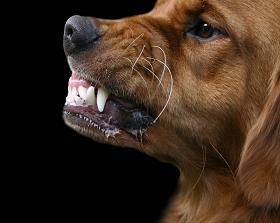Food Aggression

This is in response to a comment asking for suggestions on how to deal with food aggression. The original question was regarding a dog who would snarl over his food bowl and snap at his owners if they approached. He was not walked and had never had any formal training.
For food-guarders, I generally put them on some version of a ‘Nothing in Life is Free’ program, with hand-feeding as the major component. Simply teaching the owners how to teach some basic cues and adding an exercise routine may make a world of difference! While each case is different, some general recommendations for food guarding include:
1) The owners need to teach (at least): eye contact, come, sit and lie down. I would also suggest targeting (touch hand with nose OR ‘paw’) and go-to-your-place.
2) Put the food bowl in the closet for at least a month. Meals will be hand-fed. They could use the bowl to measure/mix the meal, but the dog eats from the hand, not from the bowl. This is, of course, as long as the dog is not biting the hand which is bringing it food. In THAT case, you should seek professional help immediately (as you should anyway if you’re dealing with aggression)!
*HAND-FEEDING* - The dog will be asked to sit or lie down for each handful of food. As he sits (or lies down) and calmly looks at the owner, he will get a handful of food. This process is repeated until the meal is completed (usually about 5 minutes).
3) The dog should also sit or lie down and give eye contact for other activities, such as getting a leash on, going outside, playing and getting any kind of attention.
4) Exercise! The owners need to walk the dog. In addition, I generally suggest teaching the dog to play ‘fetch’ with two identical items. As he is coming back with the first prize, you will tell him to “drop it” and throw the second one when he does. As he is retrieving the second prize, you will pick up and get ready to throw the first one again. This will help with step 5.
5) Teach “drop it,” “leave it” and “take it.”
• Teach “drop it” by trading up. Trade toys for treats, and treats for better treats. As he drops one item, reward him with another.
• Teach “leave it” by holding a treat in your hand so he cannot get it. Present your hand and say “Leave-it!” Do not retreat. You may repeat the cue. As soon as he makes a motion as if he’s given up, say “YES!” and then “Take It” as you let him have the treat. After a week or so, if he is making good progress, try to put food on the floor and tell him to “leave it.” If he goes for it, you will cover it up and remind him to “leave it” until he gives up, then say “YES!” and then “Take it” as you direct him to eat it.
• Teach “take it” as above, but also as you are presenting him with treats or toys at other times.
6) I mentioned the ‘go-to-your-place’ cue in step 1. This would also be helpful in directing the dog away from people when he acts inappropriately (it tells him what to DO, rather than just saying “NO!”).
**These are all general suggestions. Every dog is different. If you are dealing with any kind of aggression, it is always recommended to seek professional help from a trainer or behavior consultant who has experience with aggression and who will not use aggressive techniques to try to eliminate the aggression. If you meet aggression with aggression, you are very likely to get MORE aggression!




